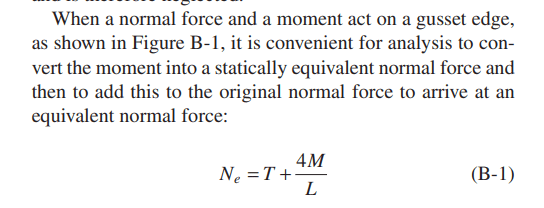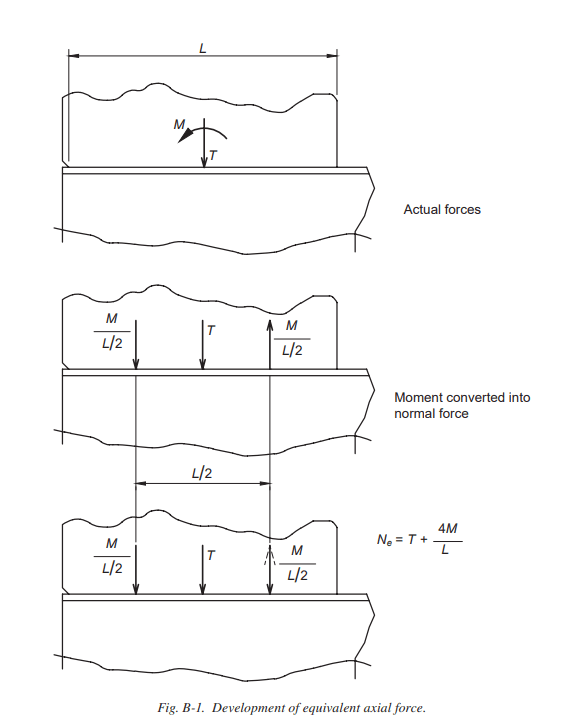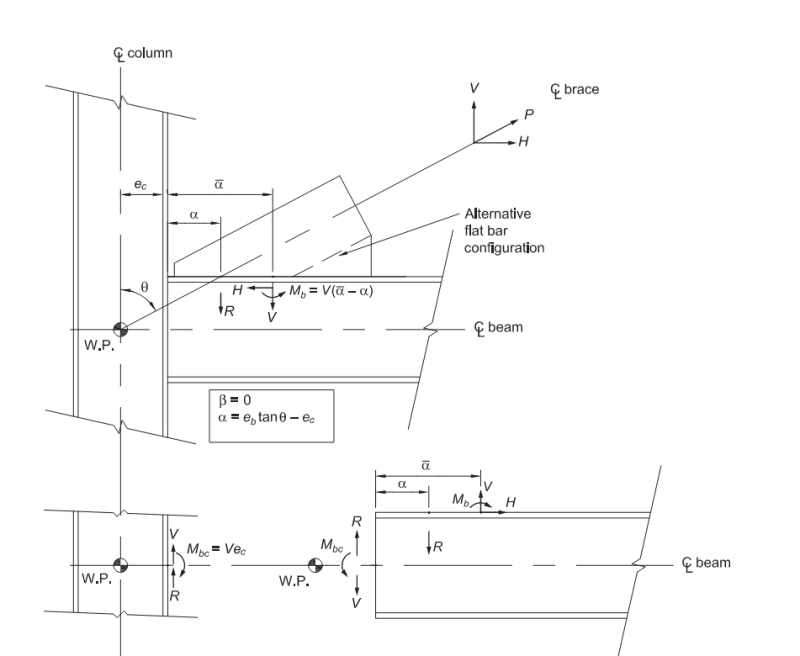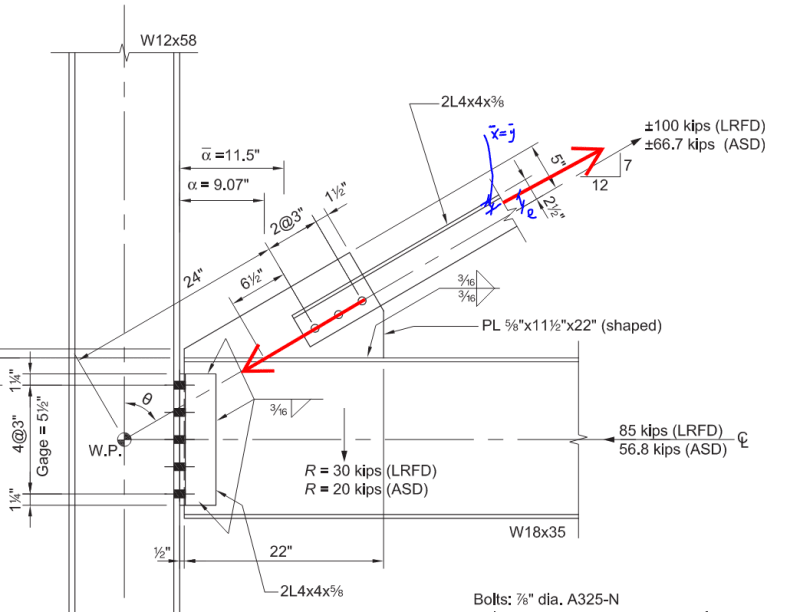Nick6781
Structural
- May 15, 2024
- 25
Referring to Appendix B of the guide, why is the normal force Ne=T+4M/L? M produces a force couple and the forces are not in the same direction. Need help understanding this.




Follow along with the video below to see how to install our site as a web app on your home screen.
Note: This feature may not be available in some browsers.


